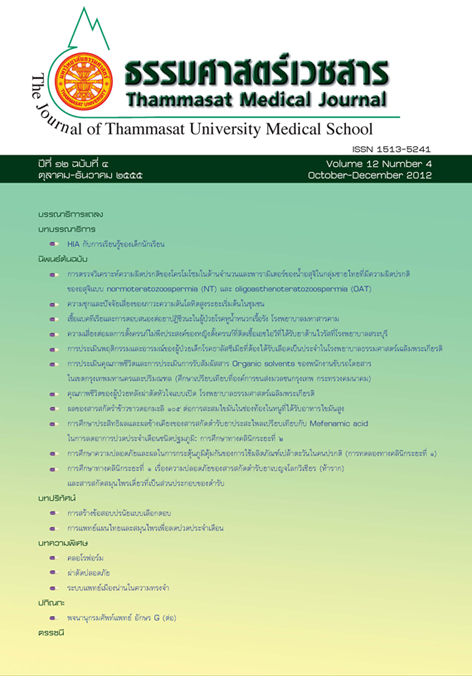Behavior and emotional screening of children with transfusion-dependent thalassemia using the strengths and diffi culties questionnaire in Thammasat University Hospital
Keywords:
Thalassemic children, Behavior and emotional problem, The strengths and diffi culties questionnaire (SDQ)Abstract
Introduction: Thalassemia is the cause of chronic anemia that is common in Thailand. Severe thalassemic diseaseneeds a long term management which affects patient and their family both physical and mental health.Evaluation of behavior and emotion of thalassemic children is very important to know impact to theirlives and their family which can help for guideline of management in the future.
Objective: To study the prevalence of behavior and emotional problems and associated factor of children withtransfusion-dependent thalassemia in Thammasat university hospital.
Methodology: A descriptive cross sectional study was conducted for 16 children with transfusion-dependentthalassemia at Thammasat university hospital, aged between 5 and 18 years. The strengths anddiffi culties questionnaire both self-report version (S-SDQ) and parent version (P-SDQ) were used toanalyse the behavior and emotional problems.
Results: The mean scores derived from S-SDQ in each category were as followed emotional problems 3.75,conduct problems 2.68, hyperactivity-inattention 4.25, peer problems 2.31 and the total diffi culties 13.00.The strength of children was prosocial behavior 6.75. The prevalence of behavior and emotional problemsusing a cut off point recommended by a previous survey in Thailand on the S-SDQ were emotionalproblems 31.3%, conduct problems 12.5%, hyperactivity-inattention 18.8%, peer problems 6.3% andthe total diffi culties 37.5%. Compare to those reported in the P-SDQ, the mean scores and theprevalence were within a narrow difference that the hyperactivity-inattention was in higher proportionbut negative for conduct problems. There were no factors founded to make any impact on thebehavior and emotional problems in the study group.
Conclusion: Behavior and emotional screening of children with transfusion-dependent thalassemia in both self andparent perspectives were in the normal range.
Key words: Thalassemic children, Behavior and emotional problem, The strengths and diffi culties questionnaire (SDQ)



